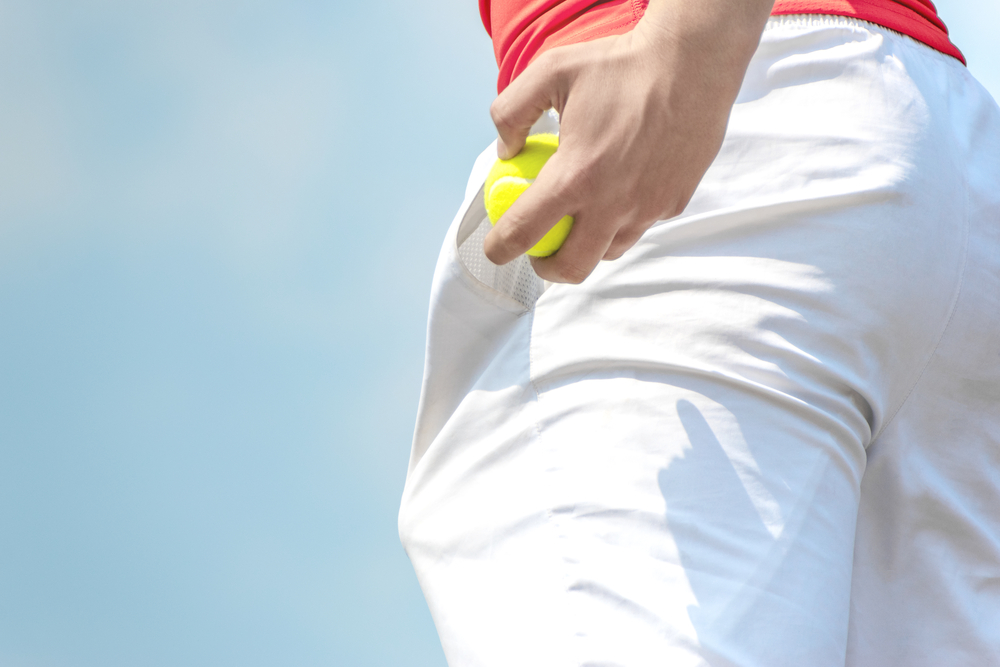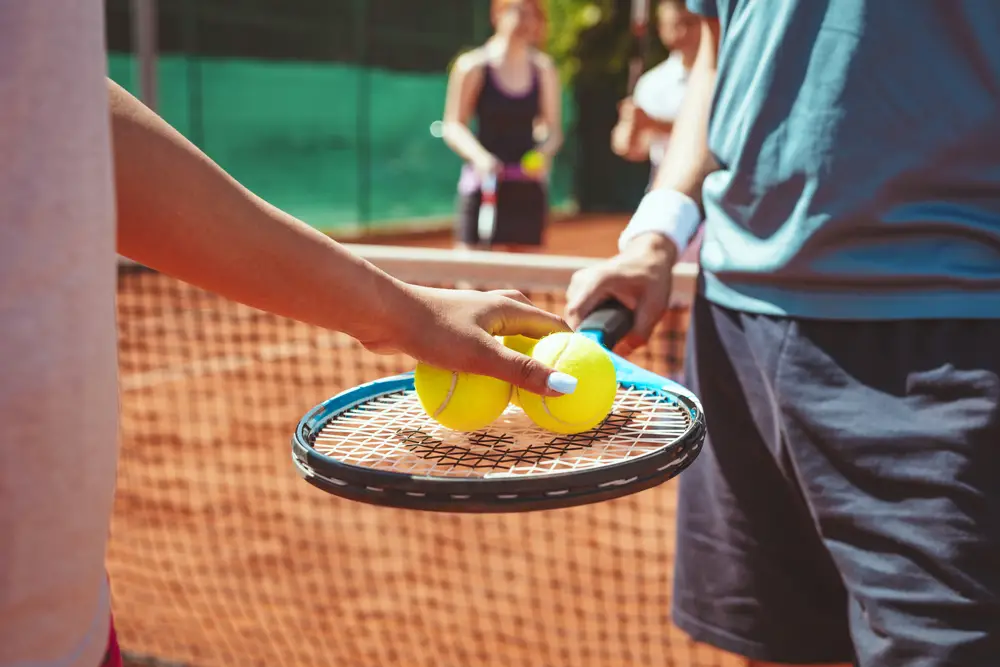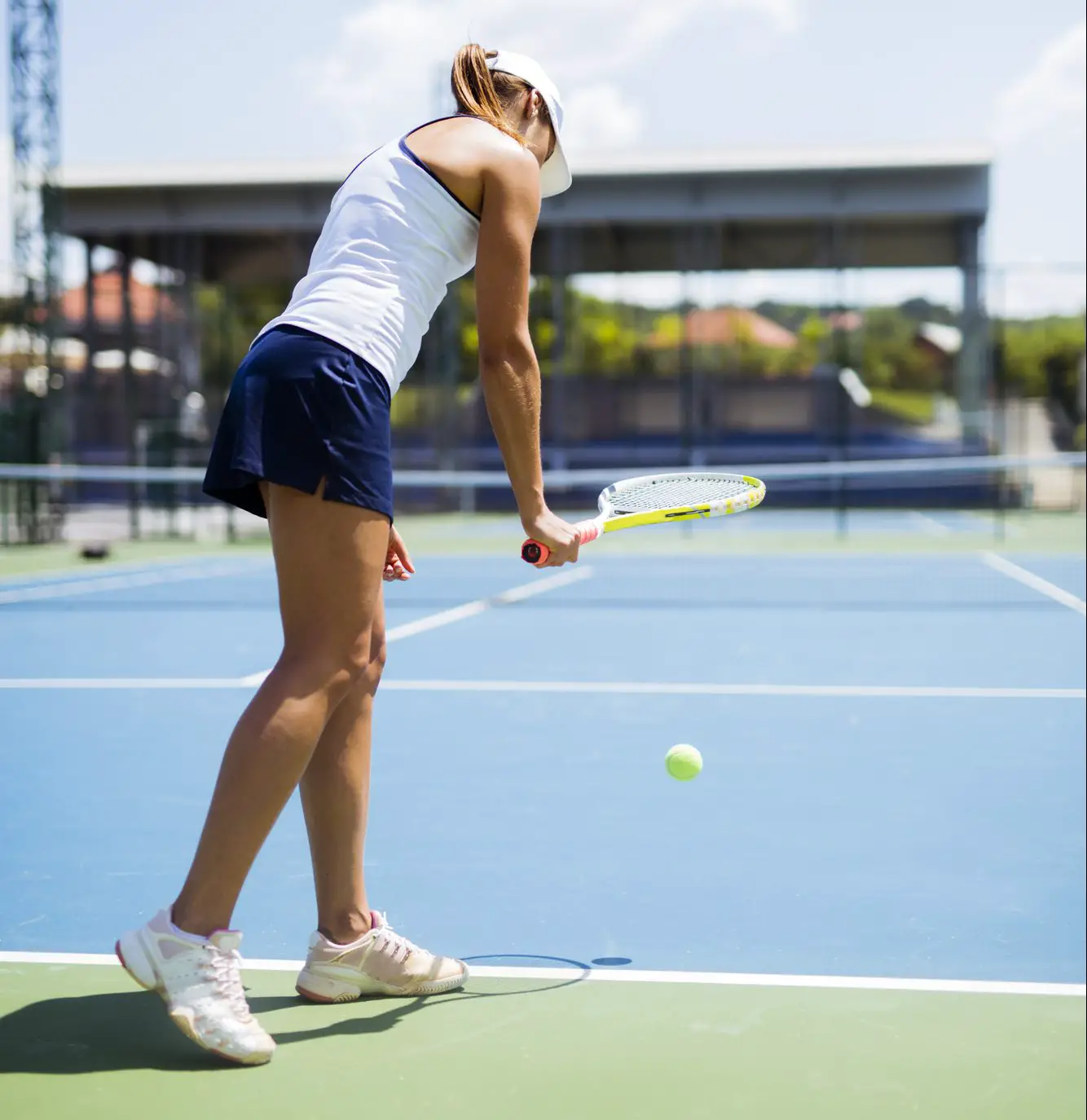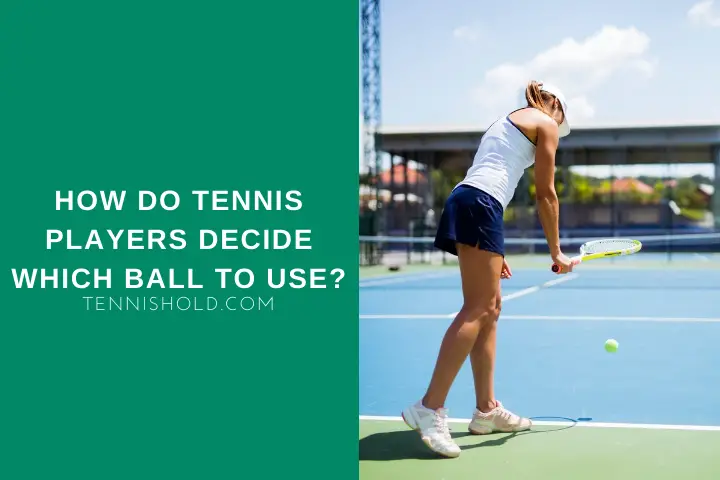For most people deciding which ball to use is pretty simple. You open a tin of balls, start playing with them, and pick up and hit the nearest one.
This is the case for almost all beginner players as well as some competitive players.
If you watch professional players in training, they will also just hit the ball nearest to them. However, this is not usually the case in matches.
They will pick up 3 or 4 balls in matches and inspect them before throwing the spares away.
Why is this, and what do tennis players look for when deciding which ball to use?
Tennis players are normally looking for the ball with the least amount of fluff. The less fluff on the ball, the newer it is. By serving with a newer ball, it will bounce higher as it weighs less. As it’s not as heavy, it will also travel faster.
The difference will be small, but every little helps.
In this article I will be discussing:
- Why tennis players hold several balls before serving
- What tennis players are looking for as they inspect balls
- The reasons tennis players bounce the ball before serving
Read on!
Why Do Tennis Players Carry Three Or Four Balls?

When players are preparing to serve in tennis, they will usually have two balls on them. One in their pocket and one in their hand.
The one in hand is to be used for the first serve. The ball in their pocket is there if they miss the first serve and need to try again.
The reasons players begin the point with two balls and not more or less is for the following reasons.
If you have just one ball and miss, your concentration will be disrupted as you pick up another ball to serve with.
If you have more than 2 balls, it is just more weight to carry. This will make it harder to move and increase the risk of the ball falling out of the pocket.
You could argue that having a third ball saves time if you serve a let. But how often do you serve lets anyway?
A let, in this context, is a serve that hits the net and goes in. If this happens, you get to attempt the serve again.
If you watch tennis on TV, you will notice something happen before the player even prepares to serve.
You will normally see them holding three or four balls while feeling and inspecting them.
When players come to serve, they usually want to use the newest balls. This is because using newer balls that come through faster increases their chance of winning the serve.
You may be wondering now why they don’t check every ball on the court. Why do they check just three or four?
If a server takes more than 20 or 25 seconds to start the point (depending on the tournament), they will receive a code violation.
With less than 30 seconds to begin the next point, players do not have time to check every ball.
What Are Tennis Players Looking For When Examining A Ball Before Serve?

The most common reason people inspect several balls is to find the ones they will serve fastest.
What specifically are they looking for that tells them that the ball will come through faster and bounce harder?
I’ve already mentioned the fluff on the ball, but pressure also plays an important role.
If you want to hit a serve that will bounce high, you will need a ball that has enough pressure to do that.
When tennis players inspect balls, they also squeeze them a little. By squeezing, you can feel how much pressure is inside.
This will then give you an idea of how high it can bounce. Once the player has felt three or four balls, he can choose the ones with the most pressure.
Looking for a ball that will bounce high or glide fast is not the only thing they look for. Some players skip the examination phase altogether and guide themselves more on superstition.
French player Richard Gasquet is well known for his superstition. This superstition includes how he decides which ball to play with.
Instead of choosing the ball with the most pressure, Gasquet will use the ball with which he just won a point.
He will make the ball kids collect the ball that he just won the point with so that he can serve it again.
If he lost the previous point, he would use the ball he most recently won a point.
Players also use the time to inspect balls as a chance to mentally regroup. Tennis is as much a mental game as it is physical.
Taking a couple of seconds to switch their focus from the game allows them to relax and prepare for the next point.
Why Do Tennis Players Bounce The Ball Before Serving?

There are several reasons tennis players bounce the ball before serving.
The most common reason is to take their time and prepare themselves for the next point. By bouncing the ball, it stops the player from rushing to serve.
When I see players rushing on the serve, I first get them to bounce the ball before they toss it.
Doing this relaxes them and gives them more time to focus on the shot they will hit.
Another reason players bounce the ball is to confirm its quality. For example, some balls have a funny bounce even if they feel okay in your hands.
When you bounce the ball several times, you will notice if it has an unusual bounce.
If the ball is unplayable, you can then switch it. If it is okay, you have already gotten a feel for its bounce, something your opponent hasn’t.
Some players choose to bounce the ball down on the strings of their racket instead. By doing this, they get a little idea of how the ball reacts to the strings.
For some players, the only reason they bounce the ball is because everyone else does.
Former world number 1 Andy Murray said in 2010 he only does it because everyone else does.
It’s become a habit of the game, in the same way, apologizing for winning a point off the net has.
Final Words
Provided all the balls have been opened simultaneously and from the same can, it is unlikely to make a huge difference in which ball you choose.
Nonetheless, professional players are always looking to get that slight edge over their opponent.
What do you think about players bouncing the ball before serving? Is it a useful method of preparation?

